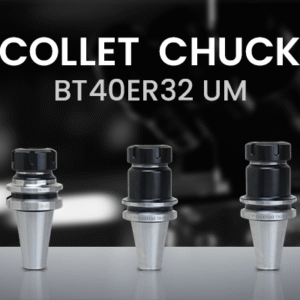So, you’ve got a fantastic image—a custom logo, a beloved pet’s portrait, or a quirky doodle—and you’re dreaming of seeing it stitched onto a cap, a bag, or your favorite hoodie. It’s an exciting idea! You pull up the file on your computer, and it’s probably a JPG, the go-to format for photos and digital art. But then you take it to your embroidery machine, and… nothing happens. Or, if something does happen, the results are a messy, tangled disaster. This frustrating scenario is a rite of passage for many budding embroidery enthusiasts, and it all boils down to a simple but crucial misunderstanding: your embroidery machine doesn’t speak the language of pictures; it speaks the language of instructions. This is precisely why you need to convert JPG to PES format.
Think of it this way: a JPG file is like a photograph of a finished cake. It shows you the beautiful final product with all its colors and details. A PES file, on the other hand, is the detailed recipe. It doesn’t show the cake; it gives the baker (your embroidery machine) a step-by-step list of commands: stitch here, use this color, move this way, trim the thread. Your machine can’t bake a cake from a picture; it needs that recipe. Making the switch from a visual format to an instructional one is the fundamental key to unlocking your machine’s potential.
Understanding the Digital Language of Thread
To truly grasp why this conversion is non-negotiable, let’s break down what these file types actually are.
A JPG (or JPEG) is a raster image. This means it’s made up of a grid of tiny colored squares called pixels. When you zoom in on a JPG, you’ll eventually see these pixels, and the image becomes blurry or blocky. It’s a universal format for displaying visuals on screens, but it contains zero information about how to recreate that image with thread. It’s just a flat picture.
A PES file is a specialized embroidery format, primarily used by Brother embroidery machines but widely supported by many others. It’s a vector-based set of commands written in a code the machine understands. This code tells the machine everything it needs to know:
- Where to place every single stitch.
- The exact sequence of stitching.
- What color thread to use and when to change it.
- When to trim the thread and move to a new section.
- The specific stitch type to use (satin stitch, fill stitch, running stitch).
Trying to embroider directly from a JPG is like handing a concert pianist a painting of sheet music and expecting a symphony. The information is there, but it’s in the wrong form to be executed.
From Pixelated Mess to Embroidered Success
Let’s talk about the tangible benefits you’ll experience once you make the conversion. This isn’t just a technical step; it’s a transformative process for your projects.
First and foremost, you gain precision and clarity. The conversion process, which is done using specialized embroidery digitizing software, translates the blocks of color in your JPG into defined stitch paths. This means crisp edges, smooth curves, and text that is actually legible. What might have been a blurry blob in JPG form becomes a sharp, professional-looking emblem.
Next, you get total control over the stitch-out. When you convert JPG to PES format, you or your digitizer can assign specific stitch types to different areas of the design. A large background area can be filled with a sturdy, tight fill stitch. An outline can be rendered as a glossy, dense satin stitch. This control directly impacts the durability and texture of your final product, ensuring it can withstand washing and wear.
Perhaps one of the most satisfying benefits is the elimination of thread breaks and bird’s nests. Embroidery machines are precise instruments. When they receive a JPG, they have to guess how to interpret it, often resulting in impossibly long stitches, incorrect tensions, and a jumbled mess of thread on the underside of your fabric—a dreaded “bird’s nest.” A proper PES file provides a logical, efficient path for the needle, minimizing stress on the thread and the machine, leading to a smooth, trouble-free stitching experience.
The Nuts and Bolts of the Conversion Process
Okay, you’re convinced it’s necessary, but how is it actually done? You cannot simply change the file extension from .jpg to .pes; that would be like renaming a novel “The Complete Guide to Rocket Science” and expecting to understand astrophysics. The conversion requires a process called digitizing.
Digitizing is both an art and a science. It involves using software to manually or automatically map out the stitch pattern from the original image. While there are auto-digitizing functions in some programs, the best results almost always come from manual digitizing by an experienced person. They make critical decisions about stitch direction, density, and underlay—the hidden stitches that stabilize the fabric before the top stitches are applied.
For a hobbyist, this means you have a few options:
- Learn to Digitize Yourself: Invest in digitizing software and the time to learn the craft. This gives you maximum creative freedom.
- Use an Online Conversion Service: Many websites and freelancers offer digitizing services. You upload your JPG, pay a fee, and they send you a ready-to-stitch PES file.
- Leverage Built-in Machine Functions: Some modern embroidery machines have basic in-built functions to help create simple designs from line art, but for complex images like photos, professional digitizing is still recommended.
Unlocking a World of Creative Possibilities
Once you embrace the need to convert JPG to PES format, a whole new world of customization opens up. You are no longer limited to pre-made designs from a CD or online store. That inside joke, your company’s intricate logo, your child’s artwork—all of it can be transformed into a unique, stitched masterpiece. This capability is a game-changer for small businesses, sports teams, gift-makers, and anyone who wants to add a deeply personal touch to their textiles.
It empowers you to be truly original. Instead of using the same generic designs as everyone else, you can create something that is uniquely yours, with a quality that rivals professionally manufactured apparel.
Conclusion
Embroidery is a magical blend of traditional craft and modern technology. To make that technology work for you, it’s essential to speak its language. While a JPG is perfect for capturing a moment, a PES file is the blueprint for creating a lasting, tactile piece of art. The step to convert JPG to PES format is the crucial bridge between a digital idea and a physical reality. It’s the difference between frustration and fulfillment, between an amateurish mess and a professional-grade finish. So, find your favorite image, find a method for digitizing that works for you, and get ready to stitch something truly spectacular. Your embroidery machine is waiting for its instructions.








